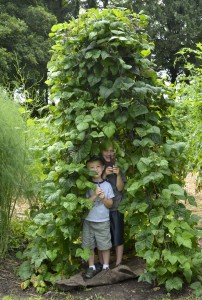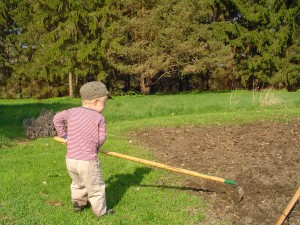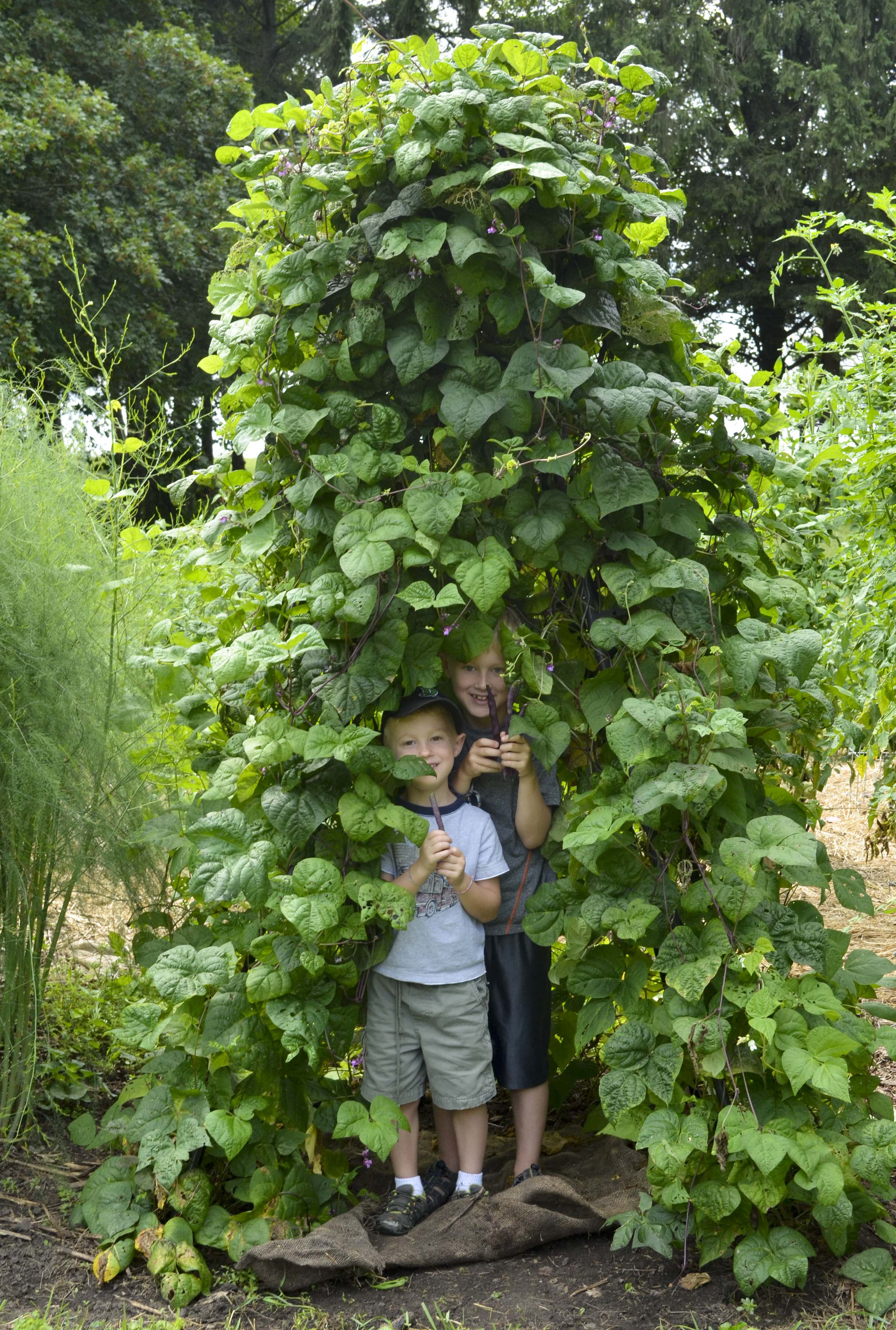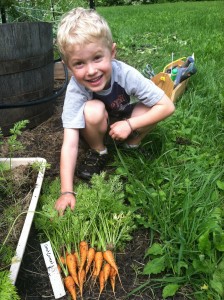 I have a little picture on my office desk of my oldest daughter many years ago, standing in her little blue rain boots, picking green beans from her bean plant. The photo was taken in our garden, a privacy-fenced oasis behind our house. She had a playhouse, and next to it, three large containers where we planted green beans, cucumbers, and yellow pear tomatoes. I remember the day we picked the beans, and how she would not stop picking them, even when it started drizzling. By the time the tomato plant was covered in hundreds of little ripe yellow pear tomatoes, she had lost interest- and I was out there harvesting by myself while she stayed cool in the shade of her playhouse and made me tea. What I learned that summer was how easy it was to get her interested in gardening- but she didn’t quite have the patience to wait for tomatoes, or the willpower to harvest them in the heat of summer. But beans? They certainly grew fast, she could easily track their fast progress, and she was more than happy to stand in the rain in her boots and pick away.
I have a little picture on my office desk of my oldest daughter many years ago, standing in her little blue rain boots, picking green beans from her bean plant. The photo was taken in our garden, a privacy-fenced oasis behind our house. She had a playhouse, and next to it, three large containers where we planted green beans, cucumbers, and yellow pear tomatoes. I remember the day we picked the beans, and how she would not stop picking them, even when it started drizzling. By the time the tomato plant was covered in hundreds of little ripe yellow pear tomatoes, she had lost interest- and I was out there harvesting by myself while she stayed cool in the shade of her playhouse and made me tea. What I learned that summer was how easy it was to get her interested in gardening- but she didn’t quite have the patience to wait for tomatoes, or the willpower to harvest them in the heat of summer. But beans? They certainly grew fast, she could easily track their fast progress, and she was more than happy to stand in the rain in her boots and pick away.
It is no secret that children and grandchildren today spend more time indoors – so how do we get our kids- and grandkids- back outside, hands in the dirt, and smelling like sunshine? Gurney’s has a few tricks up our sleeves that should help you, and the little ones in your life, get a bit of a green thumb this season.
Gardening=Food
This seems easy, kids should understand that their food comes from the ground. Getting kids to make the connection between food and food source is not just essential to teaching them about the world- it’s an essential part of teaching good nutrition. Having them plant and raise their own vegetables also exposes children to a wider range of fruits and veggies that they may have never tried before. Celery, most kids have heard of. But celery root? It’s actually quite delicious (though not very pretty). Work with your kids or grandkids to plant a food garden just for them to tend (and then have the patience to not step in and tend it if they forget a day or ten). They will learn patience along with a little science (water cycle, photosynthesis), and you can all feast on the fruits of their labor. Try: Sugarsnax carrot, Bright Lights Chard, Henry Field’s Buttery Lettuce Blend, Honey Bunch Tomato, and Now or Later Pea.
One of the easiest ways to introduce kids to gardening is to plan a beneficial bee, bird, and butterfly garden. Not only are these gardens gorgeous to look at, but they will attract a wide variety of songbirds and butterflies for to identify and learn about. Some metroparks also have butterfly release programs, so ask them which plants they encourage area residents to plant to help attract local butterflies. This project requires some planning, so make it fun; have your kids or grandkids do a little research on what birds and butterflies live in your area and what plants will attract them. Try: Gurney’s Hummingbird and Butterfly Annual Garden. Lots of gorgeous blooms, from Scarlet Flax to California Poppies, will bloom from direct-sown seeds.
Gardening=Fun
Think outside the box, or lines, of traditional gardening. Want to pique your children’s interest? Construct the frame for a fort and let several varieties of bean plants cover it. Work together with old pots and construct a tower garden filled with lettuces, paint rain barrels and then research and design a rain garden with them. Children are full of amazing ideas- give them their own plot of land and let them pick and choose what to plant. Will everything be a success? No, and that is part of gardening, learning that a shade plant won’t do well in full sun, and that some plants have different watering requirements. Try: Dill’s Atlantic Giant Pumpkin, American Giant Sunflower, and Speckled Calico Pole Lima Beans, these giants of the garden will make for big fun throughout the season.
Share your gardening adventures with your kids- and grandkids- with us in the comments section. Maybe something that went really well- or the opposite of well (sometimes those accidents make the best stories). 


